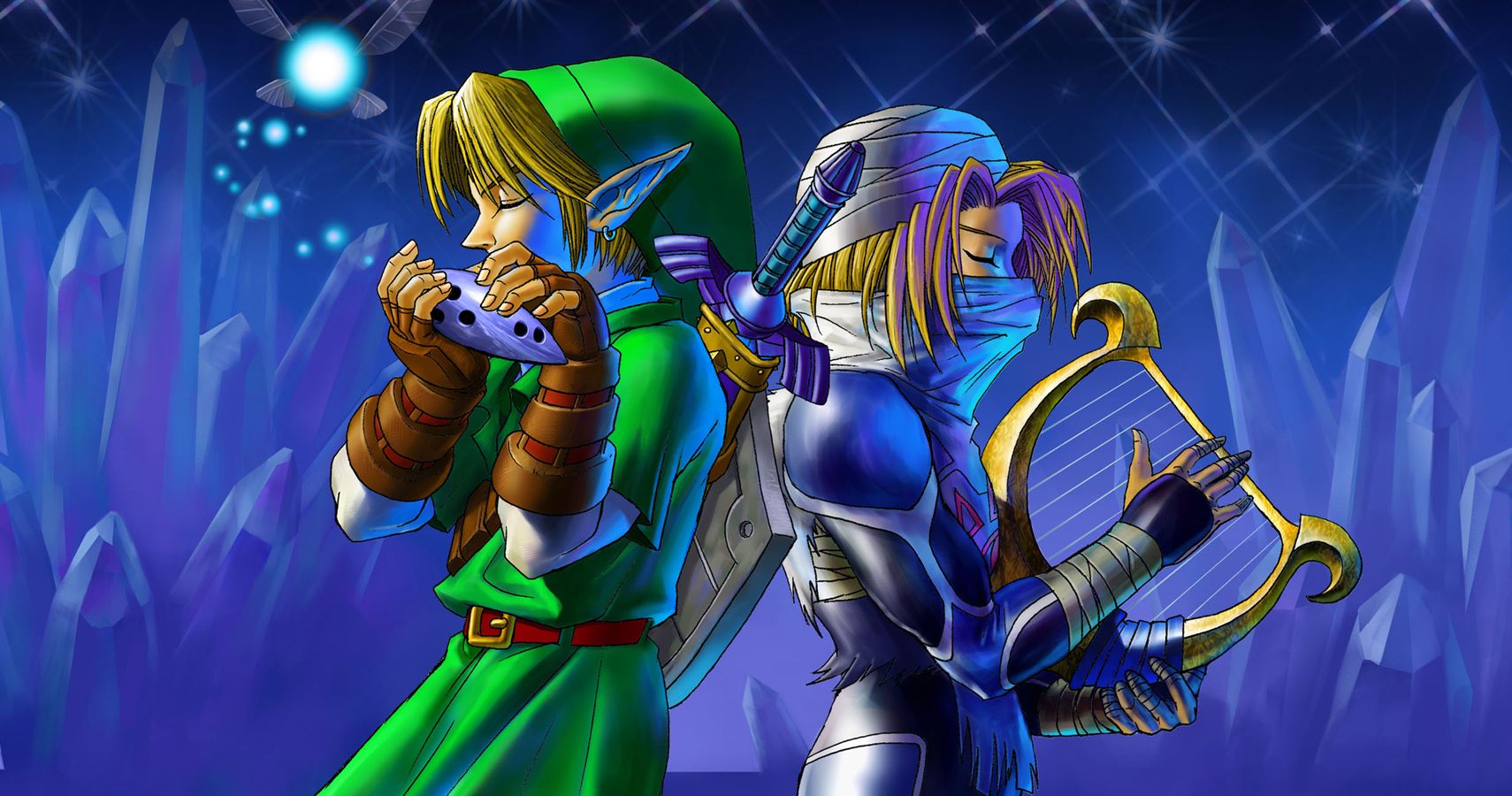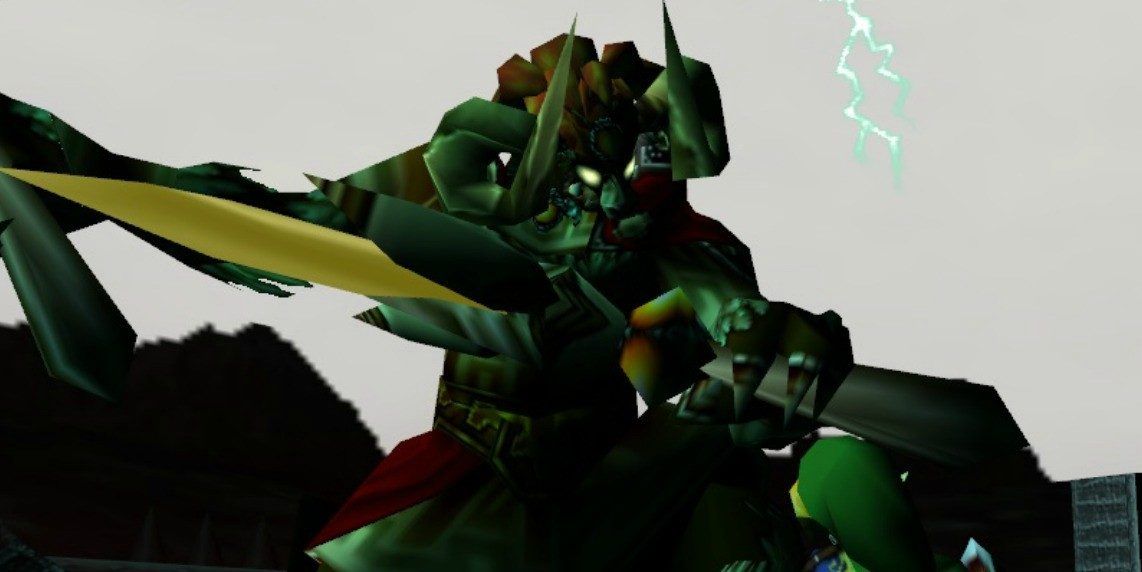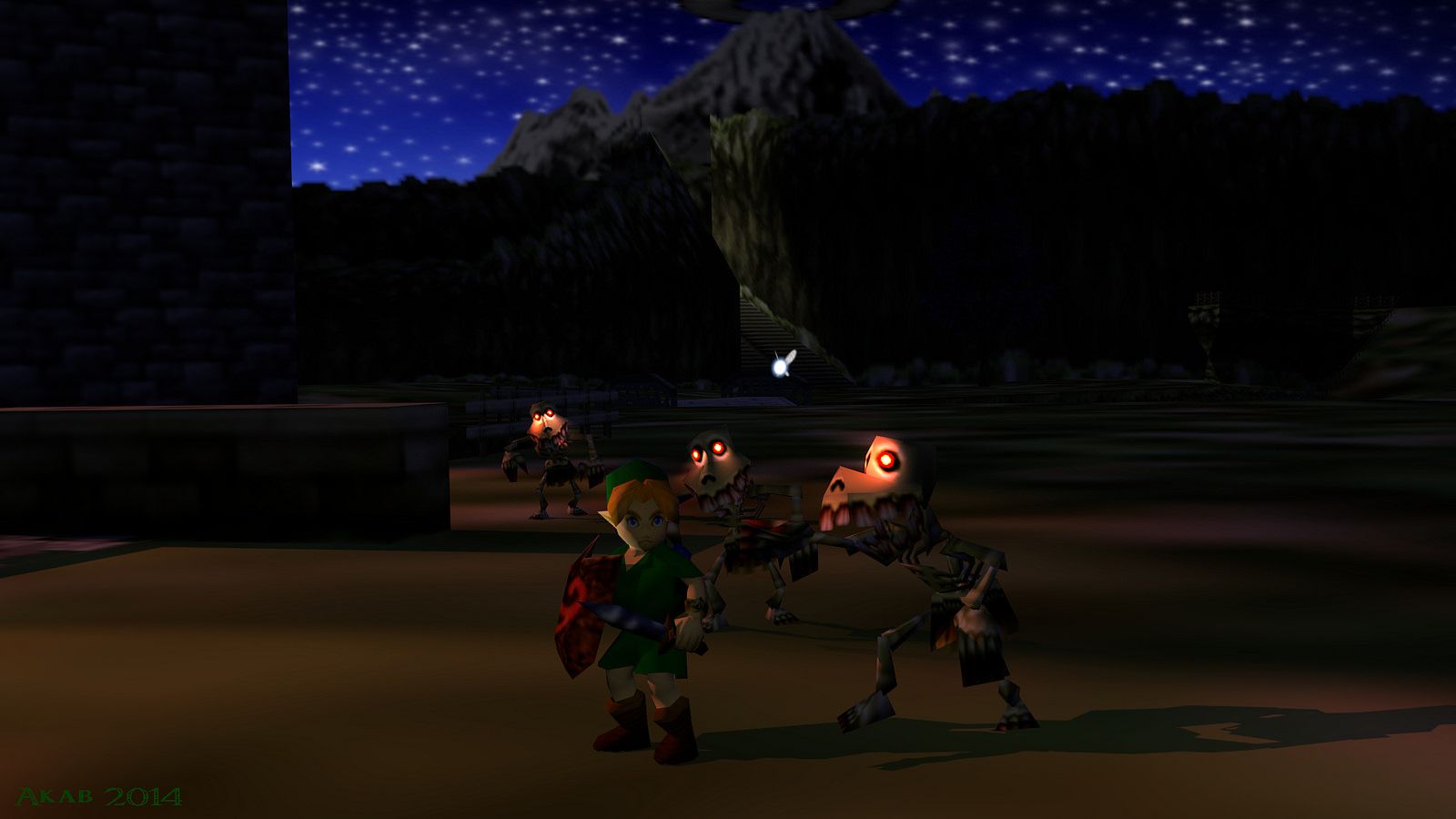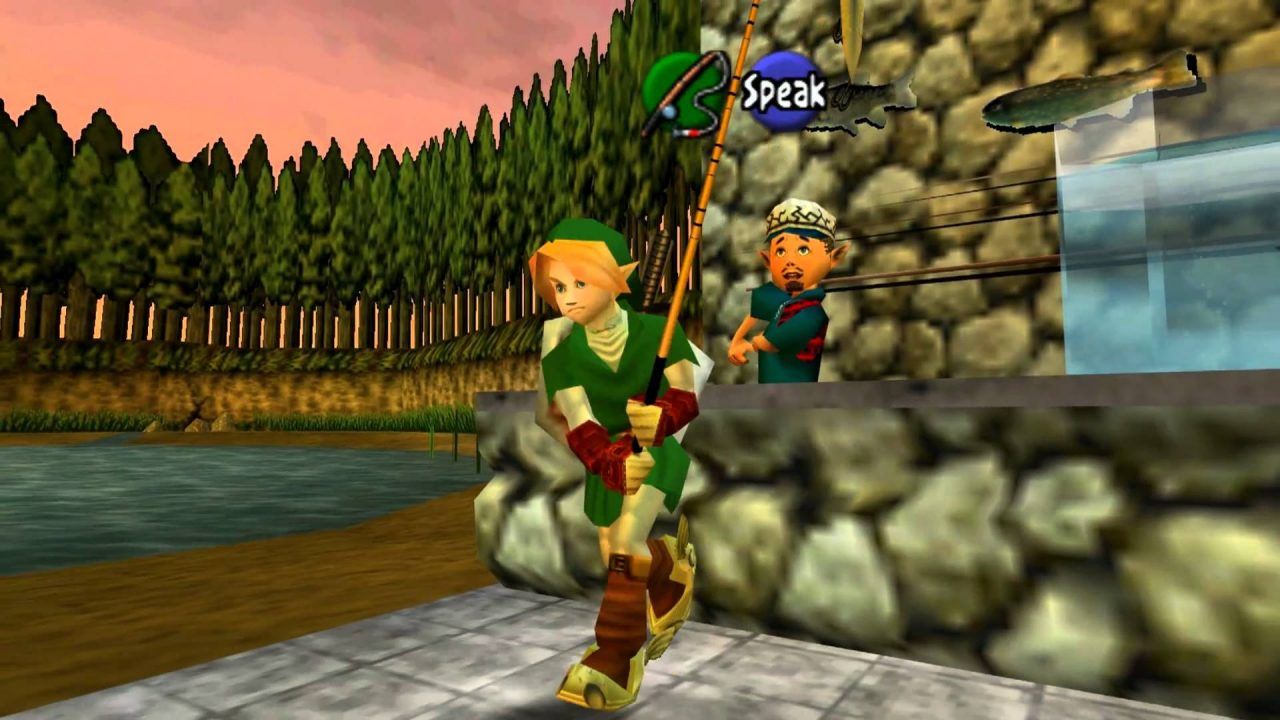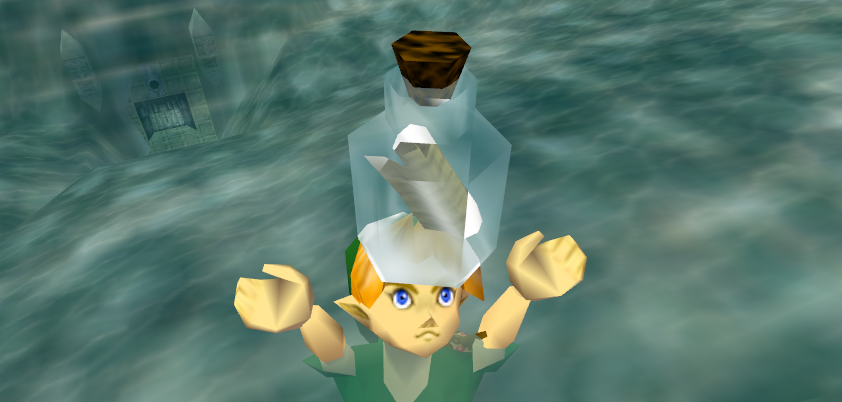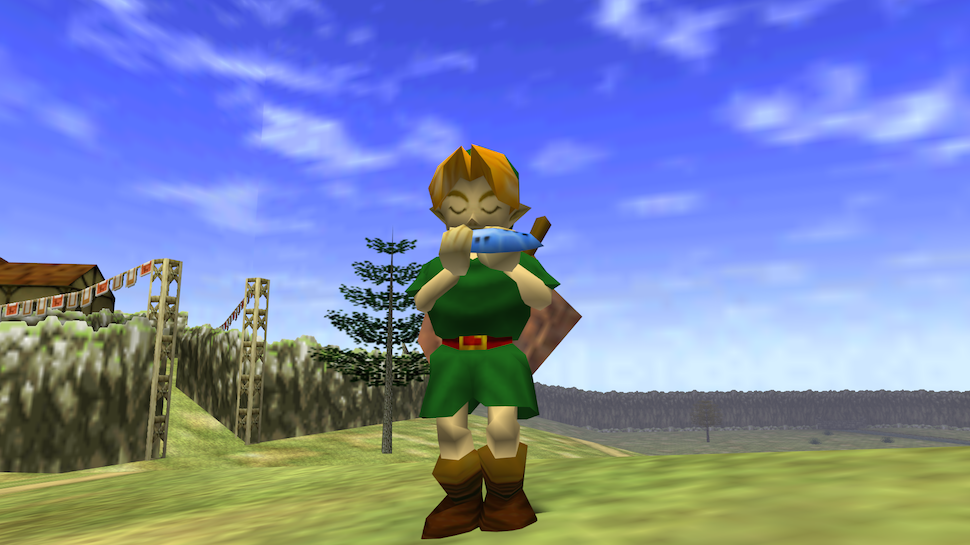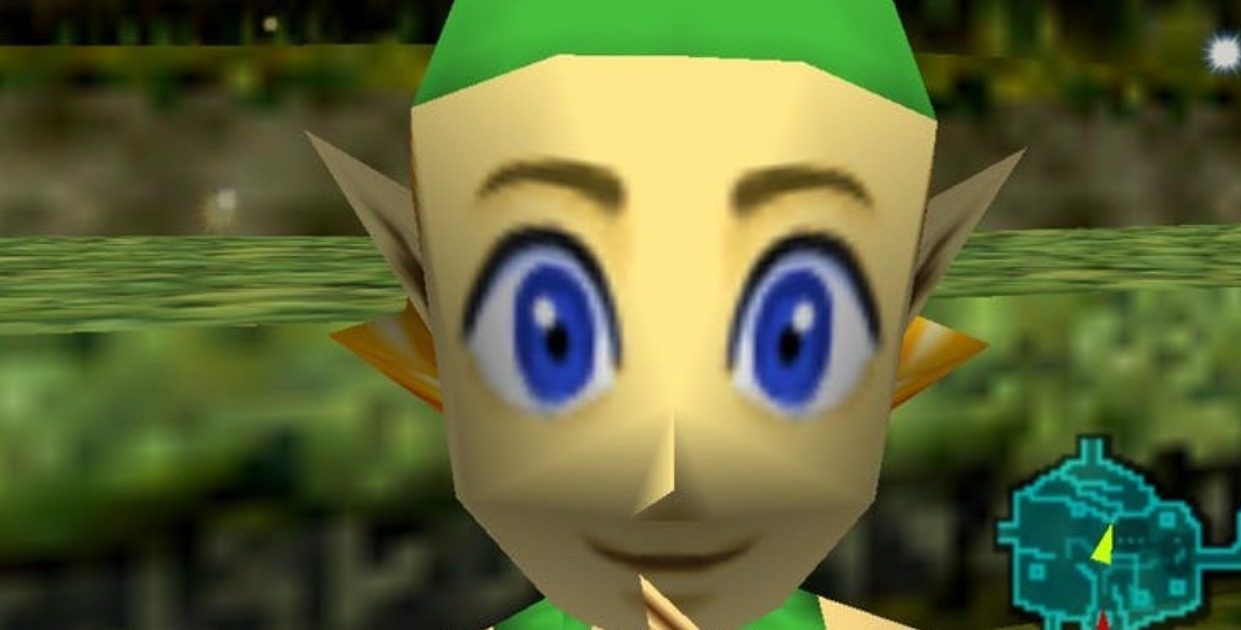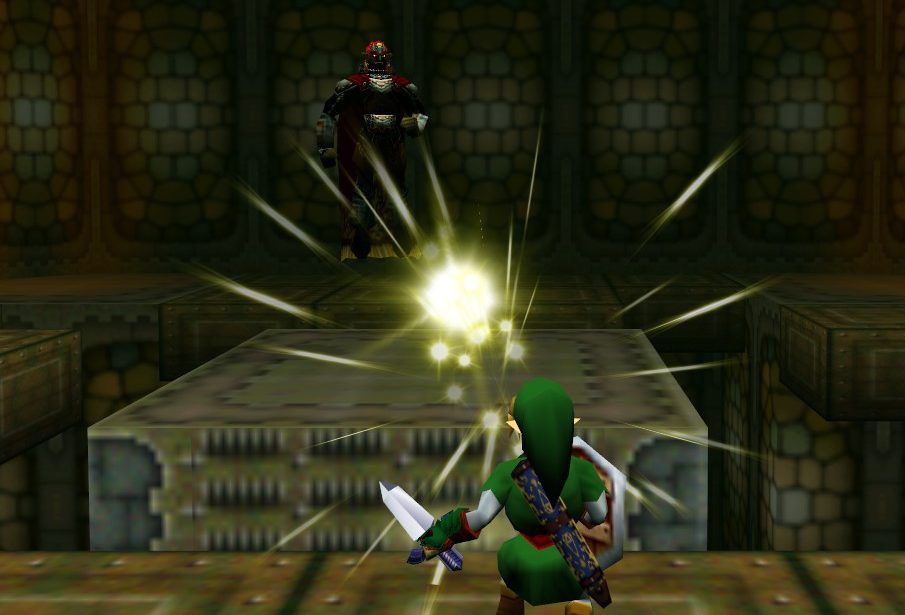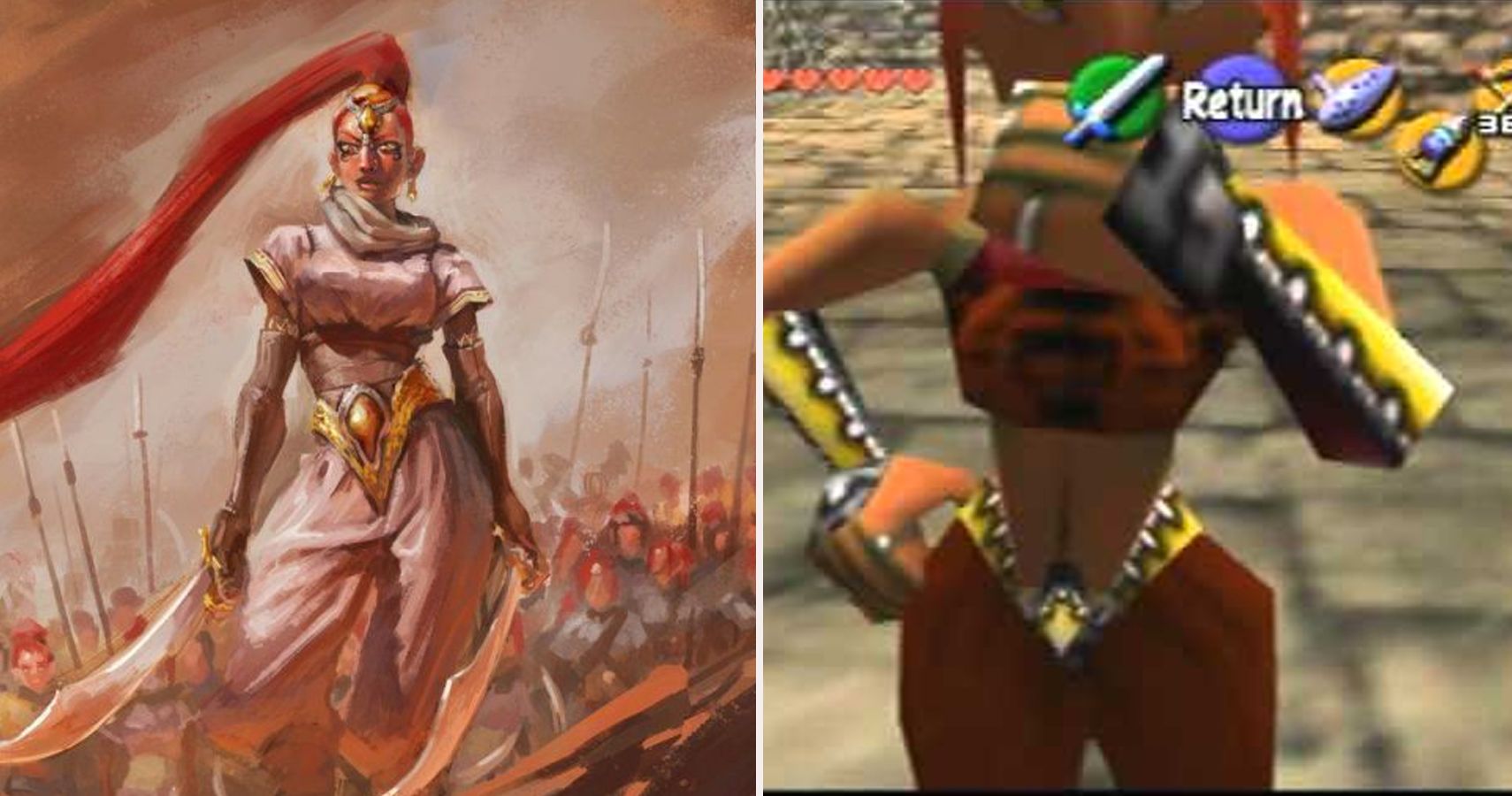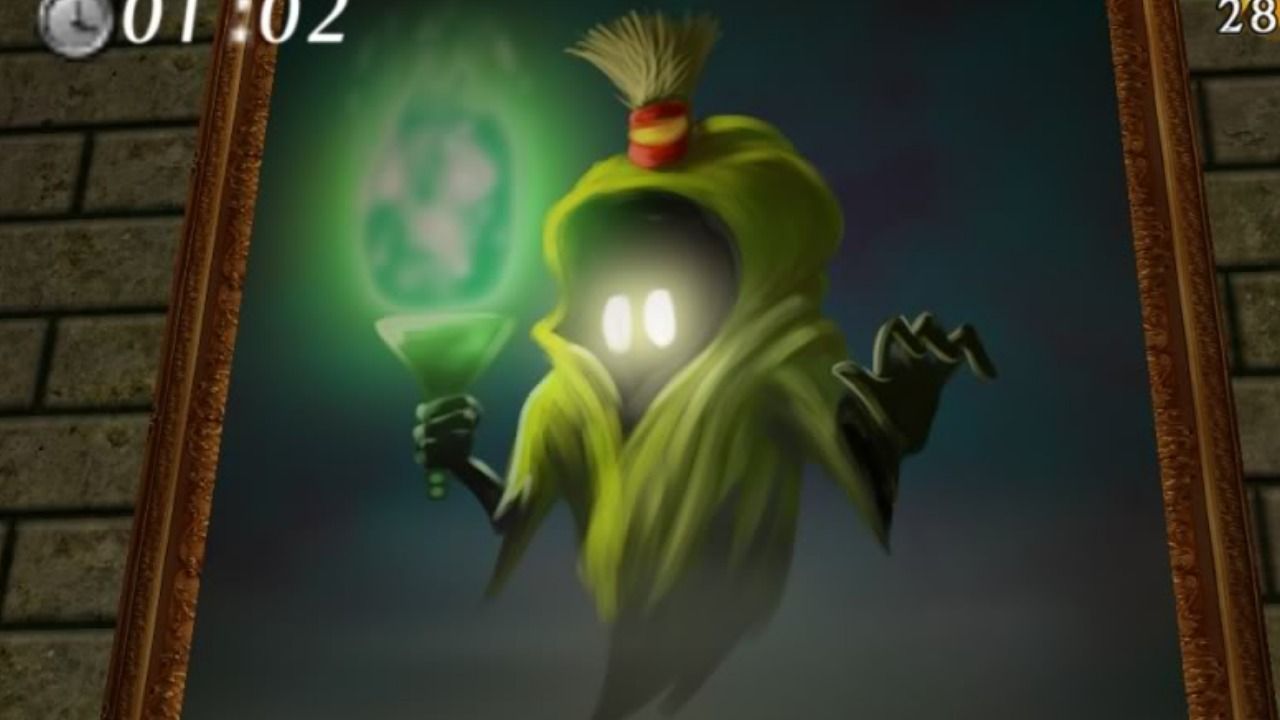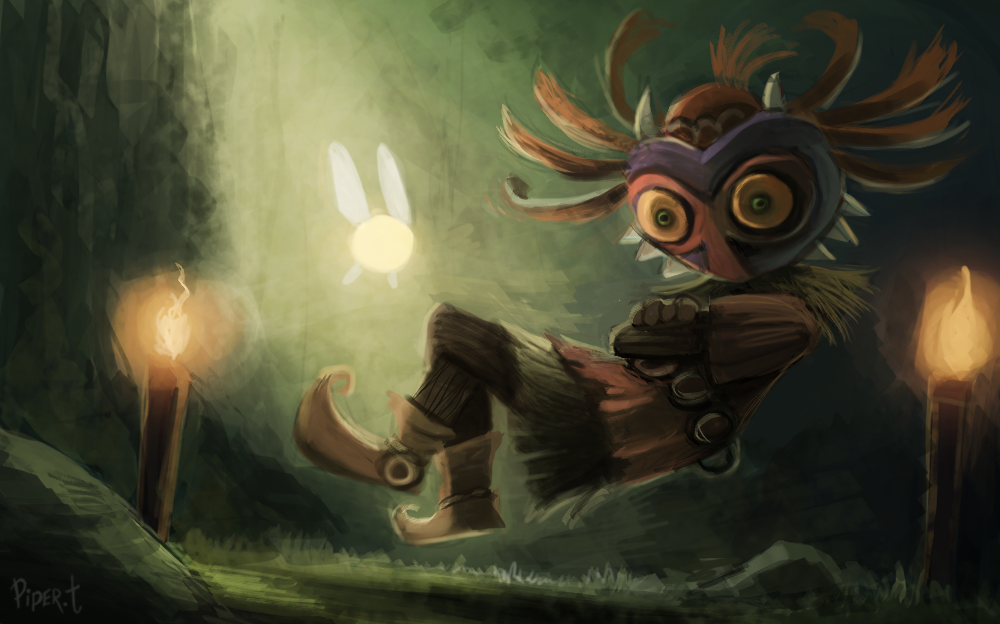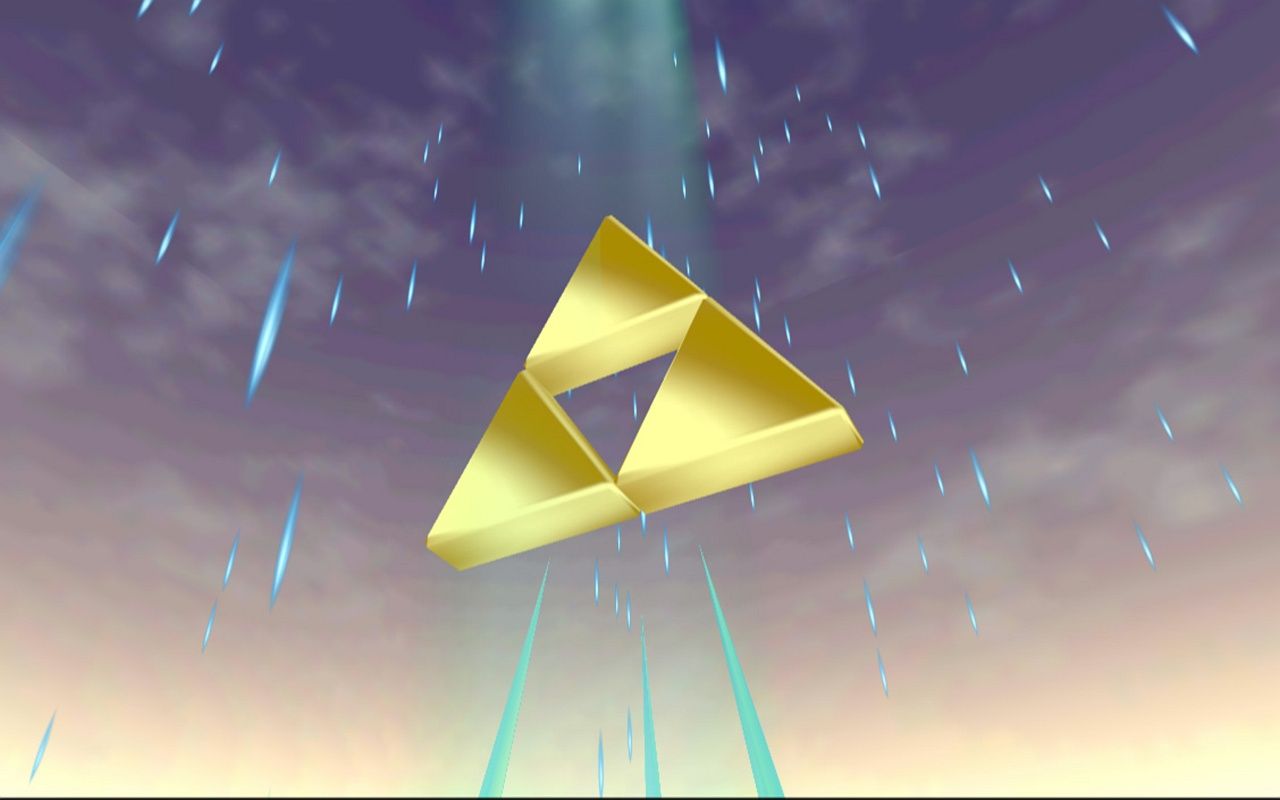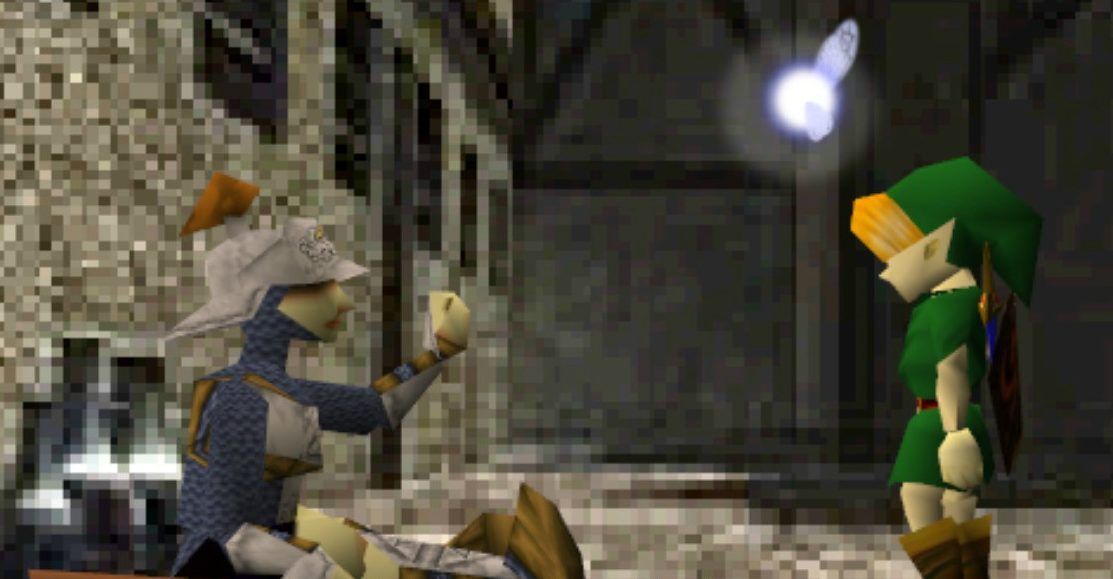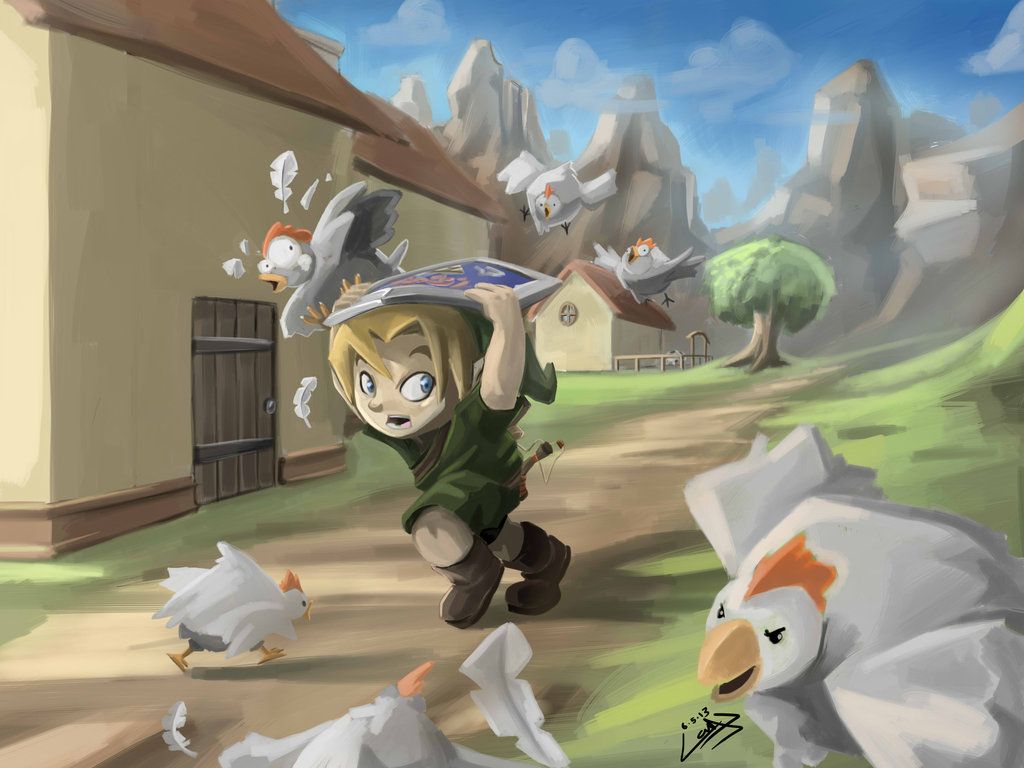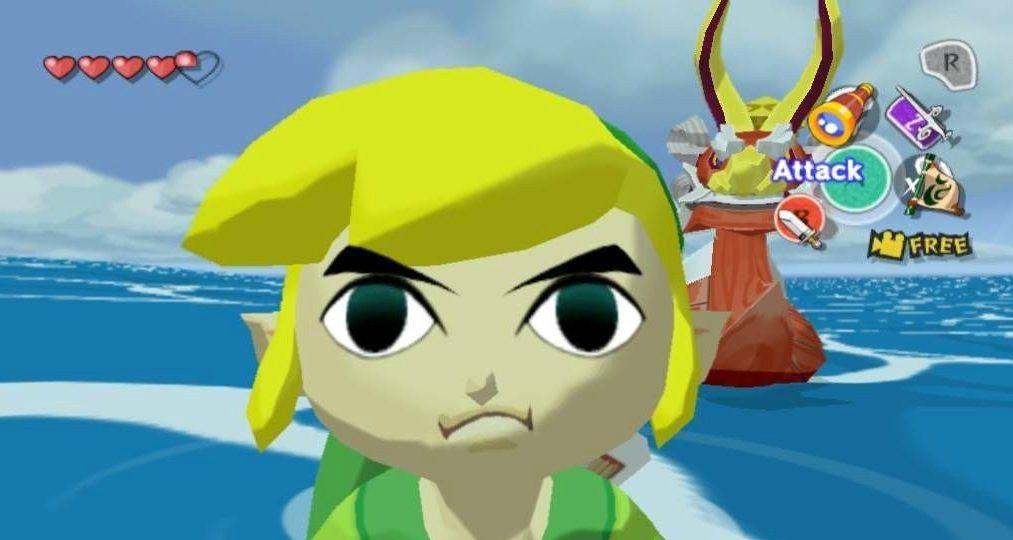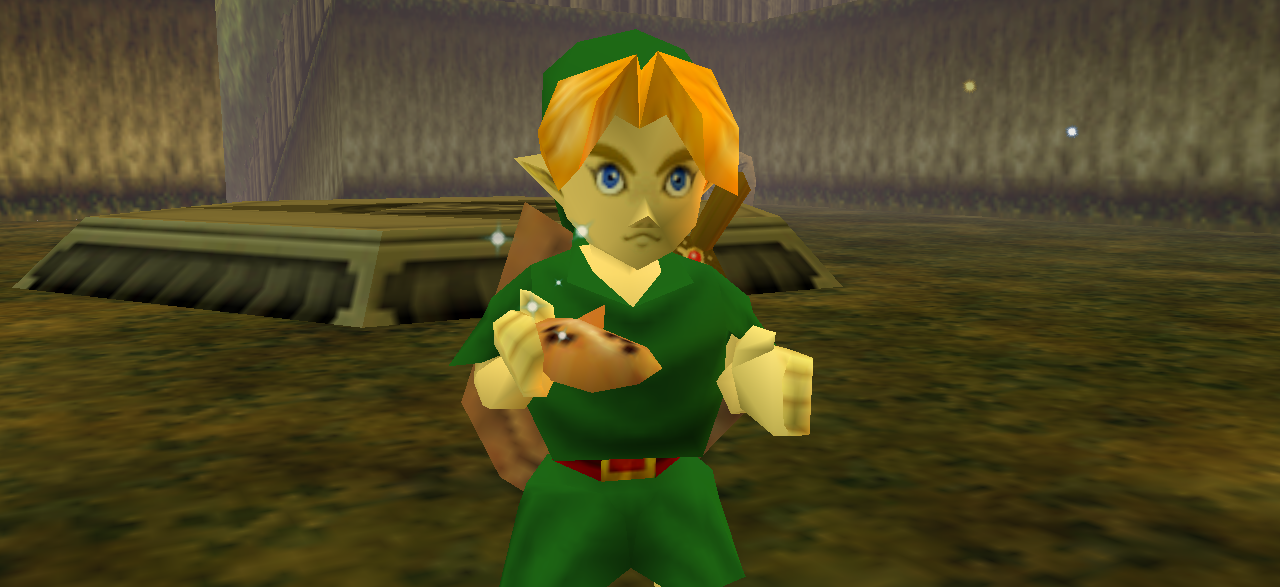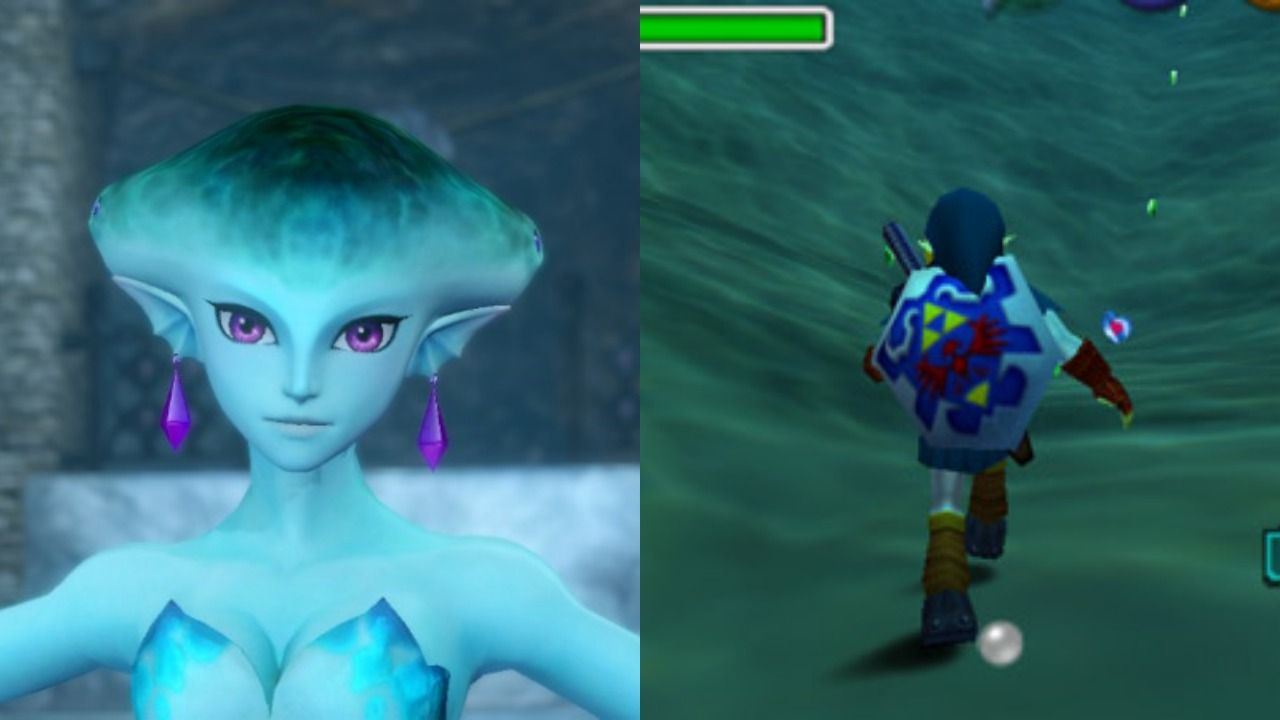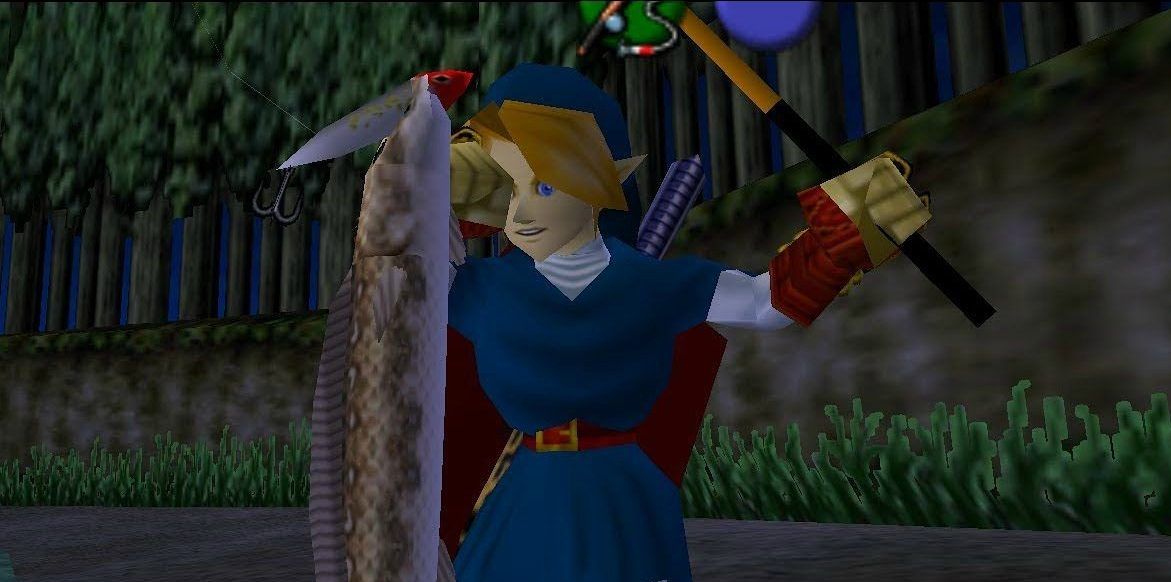Here's a bold opinion: is it just us, or is The Legend of Zelda: Ocarina of Time a pretty decent game. It is, ain't it? Obviously, it cannot hold a candle to The Legend of Zelda: Majora's Mask, but precious few titles measure favorably to Nintendo's twisted action-adventure masterpiece. Nevertheless, Ocarina of Time is alright ... Kidding! Leave us alone. There are worse games out there and, for the most part, the franchise's fifth entry has withstood the passage of time rather admirably. In less than six months, Ocarina of Time turns 20-years-old, although we doubt anyone will notice. At most, Nintendo might ask an intern to send out a tweet or a Facebook post: yeah, that sounds appropriate for one of gaming's landmark releases.
As the best selling game in the franchise, Ocarina of Time is simply a must-play title. Even though sales are important, they are not always a reliable marker for quality. If there were, the Call of Duty franchise would produce nothing but gold. So, were critics fond of Ocarina of Time? Yeah, you can say that. Despite possessing the vocabulary of a newborn, Link warrants a place among gaming's Mount Rushmore and Ocarina of Time bought Nintendo a lifetime of good-will.
Approaching its 20th anniversary but still with stories to tell, here are 25 things only superfans knew they could do in Ocarina of Time!
23 Ganon's Secret Weakness
Ocarina of Time is classified as an Action-RPG, but there is a heavy focus on solving puzzles and exploration. Regardless of the quality of the smaller enemies, they will always be nothing more than filler standing in the way of the boss. If the bigger fights suck, then the game is going to lose a lot of momentum. The story might be about saving Princess Zelda and Hyrule, but we keep on playing to see what Nintendo has in store for Link. Counting sub-bosses, Ocarina of Time consists of eleven massive opponents and each one of them can be taken down by employing a specific strategy. The first boss in the game, Queen Gohma, can be stunned by throwing Deku Nuts in her general direction. While this item is useful against smaller enemies, they are essentially powerless against the other bosses. With one exception...
Ganondorf-Ganon is Ocarina of Time's final test and, if fought Nintendo's way, the chap can be tough to defeat. However, Link is trying to save the world and has no time to fight fair, so feel free to throw everything and the kitchen sink at Ganon!
Deku Nuts turn this fight into a cakewalk, as they damage the boss nearly as much as any other weapon.
Just fling those bad boys at Ganon's tail and watch the big bad go down like a sack of potatoes!
22 Glitching Into Gerudo's Fortress
Glitches either degrade a potentially decent game into a disappointing one or elevate a great title to new heights. If nothing else, Nintendo never fails to publish a polished experience. Obviously, this does not mean there is no flaws or bugs, but the developer's first-party titles are never going to be as hilariously buggy as some of their contemporaries. Anyway, glitches get a bad rap because, nowadays, we tend to hear about every unintentional issue found in AAA titles. On the one hand, it is easier than ever to get these problems fixed; however, as long as they are not game-breaking, glitches can be a ton of fun!
Ocarina of Time is a technical marvel but cracks can be found in the walls. In the narrative, Gerudo's Fortress can only be accessed by adult Link, but a glitch allows players to explore the area while in the earlier chapters. The steps are outlined in this helpful guide and require a bit of trial-and-error to get it right. The post even suggests that this section might allude to some scrapped content, as there are a couple of items that are only available during Young Link's sections. See, glitches are just another way to experience a game!
21 Summoning Supersized Enemies
Okay, we are going to come clean and admit that this one went over our heads, so credit to Virtual Bastion's DUCKOFINDEED for pointing out this feature. Ocarina of Time is littered with common enemies that are defeated regularly by Link. Honestly, these creatures should be on the verge of extinction, but they keep on finding a way to return for more. Besides Ocarina of Time, Stalchildren can also be fought in Majora's Mask and Twilight Princess, although the latter altered their name to Stalkin. Preferring to pick on vulnerable adventurers who are their own size, the skeletons target Child Link during the nighttime and always approach a battle in pairs. After defeating one half of the duo, if the player deters on besting the second Stalchild, a new member will spawn to take the place of its fallen comrade.
As Link is hardly going to succumb to the attacks of weaponless skeletons, Stalchildren put up quite a measly challenge.
After reducing their population by ten, Nintendo throws a curveball in the form of larger sized variants that reward players with three Rupees after they are defeated.
Learning a thing or two from Dragon Ball Z's Saiyans, Stalchildren are not the only enemies who get stronger after every loss, as Leevers and Guays experience a similar metamorphosis.
20 Catching Something Other Than Fish
Demanding 20 Rupees for each trip, fishing is a rich man's game in Ocarina of Time. Thankfully, Link can easily earn back that cash by catching a Hyrule Loach, as the Pond's owner rewards the adventurer with 50 Rupees for each conquest. Unfortunately, as previously mentioned, Loach are tricky and require quite a bit of planning to reel them in. If the fish are refusing to bite and you are unwilling to let those 20 Rupees go to waste, there are other ways to get your money's worth! Disclaimer: kids do not try this at home...
Hey, nobody said that Link can only aim for the pond! With the fishing rod in the adventurer's grasp...
Redirect the trajectory towards the fisherman's general area and flick the hook towards the dude's hat.
As long as Link's aim is true, the owner's cap can be fished off his head! At this point, the player has two options: return the hat or cast it into the pond. The former results in no repercussions, but the latter sees Link fined 50 Rupees by the disgruntled fisherman. While the cost might be rather high, nothing beats witnessing a childish prank committed by Hyrule's hero!
19 Inventory Management For Pros
Ocarina of Time's inventory allows for enough room for Link to carry any items that might be necessary throughout his journey. While certain RPGs place an absurd amount of focus on inventory management and trading goods, The Legend of Zelda has always opted to keep this practice relatively stressfree. Breath of the Wild's combat system meant that limiting the number of weapons that can be carried was a crucial part of the challenge, but that was not the case with Ocarina of Time. Once all the items are collected, there should still be two free spots remaining on the list.
While this reduces the anxiety of carrying too much weight, Ocarina of Time's inventory ends up containing a ton of useless items that cause nothing but clutter. After scrawling through pointless receipts and items for a dozen times, you might be wishing to replace them with something useful. While a magical new weapon will not suddenly plummet from the sky...
There is a small glitch that allows items to be replaced with bottles.
Just before catching something, pause the game and swap the jar with any other item. If done correctly, the latter will be replaced by the filled bottle and Link will receive an additional free container.
18 Pro Players Are Beast On The Ocarina
Music plays a huge role in Ocarina of Time. Even if Link's defining tools are a slingshot and Master Sword, the hero's journey would not be possible without magical devices that produce tunes required to solve puzzles. Young Link is handed the Fairy Ocarina by Saria before leaving Kokiri Forest, while the Ocarina of Time comes into the play during the future chapters. When equipped, both items produce music and are pivotal to traversing Hyrule Castle and the RPG's dungeons. Picking up a couple of different themes along the way, Link transforms into quite an accomplished musician by the end of his journey.
Mapped to the "A" and "C" buttons, Nintendo went as far as to require players to actively perform the notes to create a tune. This is not simply a case of picking a track from a list that regurgitates the same song for the hundredth time; no, Link needs to feel the song before accurately performing it.
The mechanism's depth goes further than that, as the Ocarina of Time's pitch can be altered by tilting the control stick in any direction.
With the right setup, the instrument can create any note between low B and high F. We might not be able to play the guitar, but the Ocarina is our sound of music!
17 The Unnamed Kokiri Actually Has A Name
Whether due to the unintentional unsettling nature of early 3D graphics or the girl's maniacal laugh, Fado comes across as quite an odd duck. Debuting as a minor character in Ocarina of Time, the Kokiri NPC is blessed with a unique design and an eye-catching performance, but she serves barely any purpose and goes through the entire plot without a name. After a short appearance during Link's youth, Fado reappears later to guide the protagonist during the Biggoron's Sword quest before promptingly disappearing. Taking into account her small role in the story, gifting Fado with a unique design and peculiar personality seems like a waste of resources.
Fans only learned her name due to a short blurb on a Nintendo website promoting Ocarina of Time.
From this point on, we will be diving into pure conjecture, so take everything with a grain of salt. Rumors suggest Nintendo's original plans envisioned a far more expansive Hyrule, including a couple of further dungeons like the Wind and Earth Temples. As N64's cartridges were restrictive, Ocarina of Time needed to be cut down accordingly. The plans might have been to present Fado as the Sage of Wind, but that role fell apart with the removal of the Wind Temple.
16 Ganondorf's Other Secret Weakness
Brandished with the moniker of The Great King of Evil, Ganondorf is a menacing opponent who challenges Link twice through a single playthrough. Acting as Gerudo's current ruler, Ganondorf is an untrustworthy fellow that practically screams "bad guy." The first boss fight takes place within the claustrophobic halls of Ganon's Castle, while the King reveals his true form in Ocarina of Time's final dungeon. Both encounters can be tricky when a player is going in blind, but experience turns them into walks in the park. We already mentioned one trick to defeating Ganon, so it is time to cut Ganondorf down to size.
Unlike the physical Ganon, Ganondorf is a magician at heart who bombards Link with a slew of projectiles. Discharged at quite a slow pace, players need to return the ball to Ganondorf to open him up for a hit. The sword is the most obvious tool for the job, although one does not need to limit themselves to just a single weapon. The antagonist's projectiles can be deflected using an empty bottle and even the Megaton Hammer. Admittedly, Ganondorf's loses some of his fear-factor when a piece of glass proves more resilient than his magical attacks. Why was anyone scared of this guy?
15 Master Your Own Faith
Ocarina of Time was so amazing that Nintendo rereleased the title during the GameCube era. Given away as a limited-time bonus with preorders of The Wind Waker, this version contains two different modes: the original and Master Quest. While not offering a substantially changed experience, the latter ups the base game's difficulty and retweaks the dungeons to present returning gamers with a fresh experience. In theory, the Master Quest serves as an example of an NG+ done right.
Originally titled Ura Zelda, the expansion was planned to be released for the Nintendo 64DD, but the idea was scrapped due to the magnetic disk drive peripheral failing to gain traction with Japanese audiences.
Rebranded as Master Quest, fans got to finally experience the remapped dungeons on the GameCube.
The expansion proved popular enough to warrant inclusion on the Nintendo 3DS's Ocarina of Time 3D, although the mode must be unlocked by finishing the standard game. Gamers familiar exclusively with the Nintendo 64 edition should consider giving this harder expansion a try. At worst, Master Quest is just a slightly altered version of Ocarina of Time and Nintendo's classic stands up well to multiple playthroughs.
14 Gerudo's Outfit Changes Depend On Yours
Link and Princess Zelda are rightfully perceived as icons, but they are far from the only interesting personas to plow their trade on the streets of Hyrule. In some ways, the lovable protagonist and competent damsel-in-distress are among the duller characters in The Legend of Zelda. Take, for example, the Gerudo race in Ocarina of Time; this is a civilization of mostly female warriors who are feared as thieves but, once Link gets to know them, seem surprisingly noble. If that was not interesting enough, every hundred years, a single male baby is born that is automatically elevated to the status of King, even if they came in the shape of Ganon. A flawed political system...
Link infiltrates their fortress to rescue some carpenters but ends up embroiled in a rebellion against the Gerudo's current monarch. In order to allow the protagonist to explore without risking any unnecessary fights, Link receives a membership card from Nabooru.
Nabooru's wardrobe changes depending on the tunic Link has equipped.
Even if this is a minor detail that does not impact the gameplay, it is still a cool addition that really did not need to be there.
13 Running Low On Hearts?
Ignoring the spin-offs and appearances in games like Super Smash Bros., currently, The Legend of Zelda consists of 18 mainline entries. Nintendo and Miyamoto's franchise has come along way since 1987's isometric hack-and-slash title. A Link to the Past played around with timelines and perfected the 2D gameplay, while The Wind Waker's cell-shaded graphics allowed the entry to age beautifully over the years. Breath of the Wild saw Nintendo hitch a ride on the open-world bandwagon before outdoing nearly all of its contemporaries; on the other hand, Skyward Sword proved that even Nintendo makes mistakes. Calm down, we are only (partially) kidding...
Each entry incorporates fresh mechanics and enemies into the experience, but there are a couple of faces that appear throughout the franchise. Poes are your typical ghostly enemies that disappear at the drop of a hat and came in a variety of colors. After Link puts one to the sword, the ghost's soul can be collected in a bottle and sold to the Poe Collector...
However, the player can also opt to drink them. Depending on someone's luck, the experiment either rewards Link with a couple of hearts or takes them away.
While the move can be risky, Poes are useful when caught in a dire situation that finds the player desperately needing to heal.
12 Besting The Skull Kids
Playing quite a significant role in The Legend of Zelda: Majora's Mask, Skull Kids are among the more identifiable creatures in the franchise's lofty roster. Besides appearing as stickers and an assist trophy in Super Smash Bros. Brawl and Super Smash Bros. for Nintendo 3DS/Wii U respectively, Skull Kid proved popular enough to warrant a spot on Hyrule Warriors' playable characters list. Described as children who wandered into the Lost Woods and, well, got lost; Navi paints Skull Kids as troubled souls who are not human or monsters. Ocarina of Time marked their first appearance in the franchise and, depending on Link's age, they are either friendly or hostile.
As a child, Link gets along relatively well with the Skull Kids, but they are nowhere near as receptive towards Adult Link. Frankly, that is a huge understatement, as these scarecrow-looking creatures attack the player on sight and are tough as nails. It is generally recommended to avoid fighting the Skull Kids, but the Biggoron's Sword's attack range makes the fight manageable. If you feel up to the challenge, defeating a single Skull Kid rewards Link with an Orange Rupee worth 200 of the normal kind, so the payoff is worth the effort. Also, props to Cryptid-Creations for this awesome fan-art!
11 The Angry Guard
If a developer programs an obtuse Easter Egg into their game, a player will eventually flip the necessary switches to learn the secret. In Ocarina of Time's second chapter, Link attempts to infiltrate a well-monitored Hyrule Castle to meet Princess Zelda. The castle's courtyard is crawling with guards, so the fearless hero needs to grovel through the area without raising anyone's suspicion. If caught in the act, Link is flung into jail and the process starts from scratch. In other words, stealth and persistence is the name of the game, so it is vital that Link avoids attracting any undesirable attention. Now, time to attract some undesirable attention!
Despite the chapter requiring Link to produce his best impersonation of Solid Snake, rebellious gamers yearning to live on the edge discovered a secret by firing a Deku Seed through the courtyard's left window.
As long as their aim is solid, the attack prompts the appearance of a Hyrulean Soldier who rewards Link's courage by dropping a bomb on his head.
Funnily enough, this chapter holds another Easter Egg, as the courtyard's opposite window leads to a room containing portraits of Mario icons like Bowser and Princess Peach.
10 The Absent Triforce
A MacGuffin is a prop that exists solely to instigate a narrative. A bush-league British director coined the term, but the tool is frequently applied in various forms of media. Raiders of the Lost Ark's eponymous artifact serves as a MacGuffin since Indy's adventure is driven by a desire to locate the object. Without the ark, there would be no movie. While largely associated with cinema, MacGuffins are universal mechanisms found in any medium. Recognised as the "Ultime Power," the Triforce exists to send Link on his quest and little else. As a narrative prop, it is understandable that players would believe that the Triforce can be unlocked in The Legend of Zelda: Ocarina of Time, especially when the inventory holds a perfect slot for the item. Well, we have some bad news for you...
While the Triforce was a relatively big deal in its predecessors, Ocarina of Time opted to leave it out. In the previews hyping up Link return to Hyrule, Nintendo included a screenshot of the quiet protagonist staring down the Triforce, but the object was scrapped prior to the full release. Of course, this led to speculation that players could achieve "Ultimate Power" by following a couple of guidelines. In a twist that nobody saw coming, these rumors were proven to be rubbish!
9 A Soldier's Last Words
Ocarina of Time's roster is packed with countless of colorful personalities that continue to hold a place in the souls of many gamers. This goes much further than the protagonist or the titular princess, as some of the game's best moments involve minor-characters like the protective Impa, the helpful Pierre, and the Soldier in the Back Alley. The latter might just be the best of them all, so it is a shame how precious few people get to enjoy a chat with Soldier in the Back Alley. Yes, that is his real name!
Appearing only once, Soldier can be found laying on the floor of a remote back alley in Hyrule Castle Town. If the player goes down this route prior to entering the Temple of Time, Link runs across a fallen hero drawing his final breath.
Holding on for a couple of seconds longer, Soldier recounts a tragic tale about Ganondorf's betrayal of Hyrule's Royal Family and provides an update on Princess Zelda's current whereabouts.
The information is surprisingly quite important and crucial, but the character's location means many players end up missing him. Alas, the world was simply not ready for the Soldier in the Back Alley.
8 Chicken Attack
While Final Fantasy has Chocobos, The Legend of Zelda makes due with Cuccos. Inaugurated in the franchise's third mainline entry, A Link to the Past, these chickens are domesticated animals that are good natured and humorous. Besides adding a touch of comedy, Cuccos contribute a couple of beneficial skills that prove useful when Link is caught in a tough situation. Primarily, they are mostly employed to allow players to jump off high areas without suffering a game-over. In summary, Cuccos are man's best friend and they deserve to be treated with care and respect. Alternatively, Link can smack them over the head with his sword and run away giggling like a schoolboy!
Ocarina of Time is hardly lacking for formidable foes, but few compare to the wrath of a Cucco scorned! If the adventurer opts to land three strikes on one of the chickens, it will summon an army of clucking soldiers to reign judgment on the Hyrulean! Relentless and formidable, the beasts are willing to chase Link across the map and only let up once he is out of the area. Wtfisalinh's fan-art might be pretty funny, but there is no doubt in our mind that Link is not laughing!
7 When Nintendo Undermined Nintendo
The Legend of Zelda: Ocarina of Time is the highest rated game of all time. Sitting at a staggering 99% on Metacritic.com, Nintendo's 3D masterpiece garnered near-universal praise from critics and fans alike. Who dared to push against the flow and give a less than perfect score to this shining beacon f light? Well, the answer is Nintendo. Launched as an in-house monthly magazine before going solo, Nintendo of America's Nintendo Power was a juggernaut in gaming journalism that has been sorely missed since Nintendo canceled the publication. Gratefully, the developer recently revived the brand in the form of a podcast.
Amidst a sea of 10/10s, Nintendo Power brandished Ocarina of Time with a measly 9.5! How could they?!? To be fair, that was still a supremely high score for the magazine and Zelda's adventure took top-spot in a retrospective list ranking over 200 Nintendo titles. Revisiting some of these older publications is an exercise in frustration and futility, but the reviewer seemed to not be particularly fond of Navi and found that the controls took a bit of practice to properly grasp. Whatever their reasons happen to be, 9.5 is still a fantastic score but still sits among the lower end of critics.
6 Link's Ballad
What is a princess without a theme song? Be it film or gaming, an important character must possess their own unique tune that soars to the heavens whenever they begin to strut their stuff. Gal Gadot's Wonder Woman owes half of her mystique and perceived awesomeness to Hans Zimmer's exhilarating theme song. With regards to Princess Zelda, Lullaby tends to play whenever she honors Link with her presence, although the track serves a tangible purpose in Ocarina of Time's plot. Serving as an identifier of one's ties to the royal family, Impa teaches Young Link the melody during the opening segments of the Action-RPG.
Living up to its title, Lullaby puts kid Zelda right to sleep, but that is only the tip of the iceberg.
This magical track grants a slew of useful powers and consistently assists Link on his quest. While some of its properties, like raising the water level in the Water Temple, must be used to further the main quest, the track also offers a couple of benefits that are less heavily marketed. Across the player's journey, Link comes across multiple destroyed rectangular signs, but the hero can restore them to their former glory by performing the song. The power of music really does make the world go round!
5 Zora's Secret(s)
The Legend of Zelda is the definitive Action-RPG franchise and among the most influential contributors to the genre. With 1984's The Tower of Druaga, Dragon Slayer, and Hydlide popularizing the style and influencing developers like Nintendo, 1986's The Legend of Zelda was hardly the first game to combine real-time combat with role-playing elements; however, Shigeru Miyamoto and Takashi Tezuka improved the formula. Combining hack-and-slash combat with puzzles and exploration, Nintendo's franchise constantly rewards curious gamers by presenting hidden paths and surprises. Ocarina of Time is no exception.
Located in the northeast of Hyrule, Zora's Domain is a frozen-over terrain that can only be thawed by clearing the Water Temple, a dungeon so controversial that the director of Ocarina of Time's 3DS remake had to assure gamers that things were changed. For those willing to sink to the bottom of the ocean, Zora's Domain houses two secret caves; a shortcut to Lake Hylia and an inaccessible exit at Zora's Fountain. The latter might sound fascinating, but it is merely leftover content from a scrapped cave, so there is really nothing to see. The joy of discovery has always been a big part of the franchise's appeal and Nintendo embraced exploration in The Legend of Zelda: Breath of the Wild.
4 Fish Smarter, Not Harder
Final Fantasy XV shocked the gaming landscape when Square Enix announced that Monster of the Deep would be a VR fishing game. RPGs love to include little minigames that distract from the main quest or gameplay loop, but fishing appears to be the go-to sport. The trend is so widespread, TvTropes.org dedicates an entire segment to video games with fishing as a minigame. Apparently, throwing a line into a pond is so fascinating that we need to have dozens of iterations! To be fair, as a solitary activity that rewards participants with useful prizes, fishing was tailor-made for RPG minigames. The activity might be overused, but that hardly diminishes its usefulness. The Hyrule Loach is one tricky fish!
Usually, the Loach can be found lurking beneath a log and Link's presence scares it to the middle of the pond.
When it comes to casting minigames, the standard is to rank fish by their reluctance to be caught. Ocarina of Time's Golden Magikarp is the Hyrule Loach, a fish so cowardly that it flees at the tiniest sound. The fish is not always present in the pond, so we recommend jumping in nature's swimming pool to lure it out of hiding.

